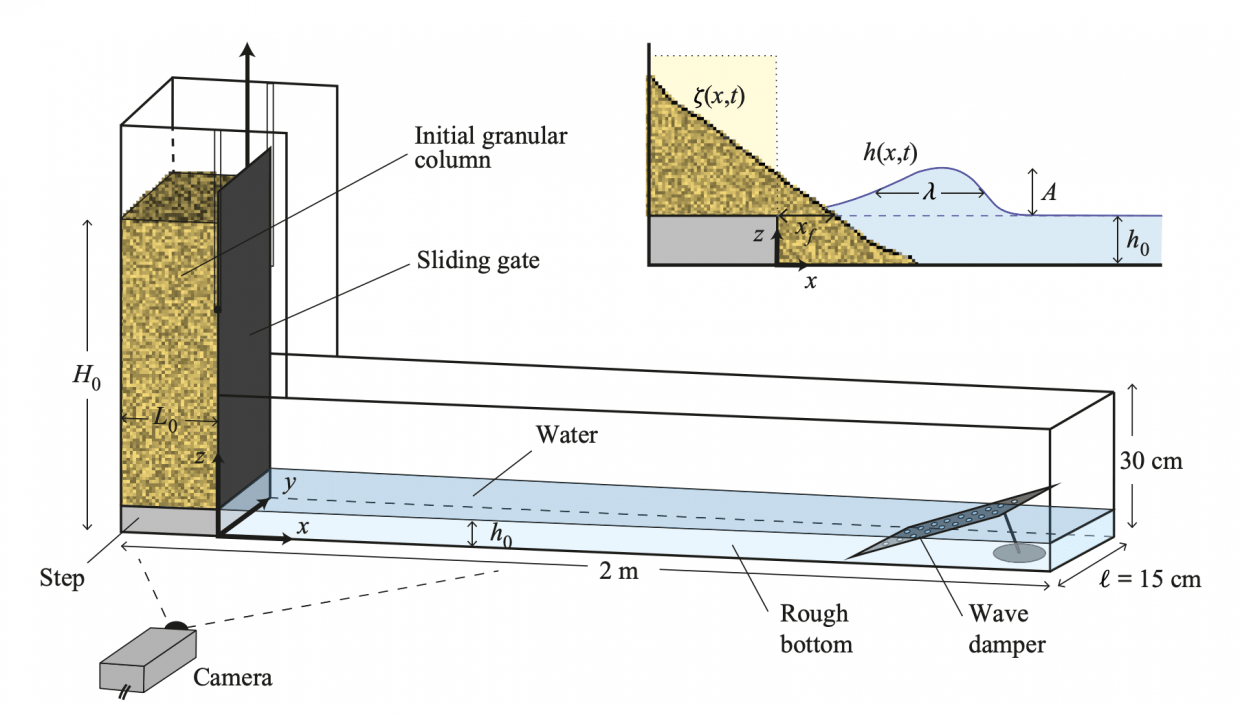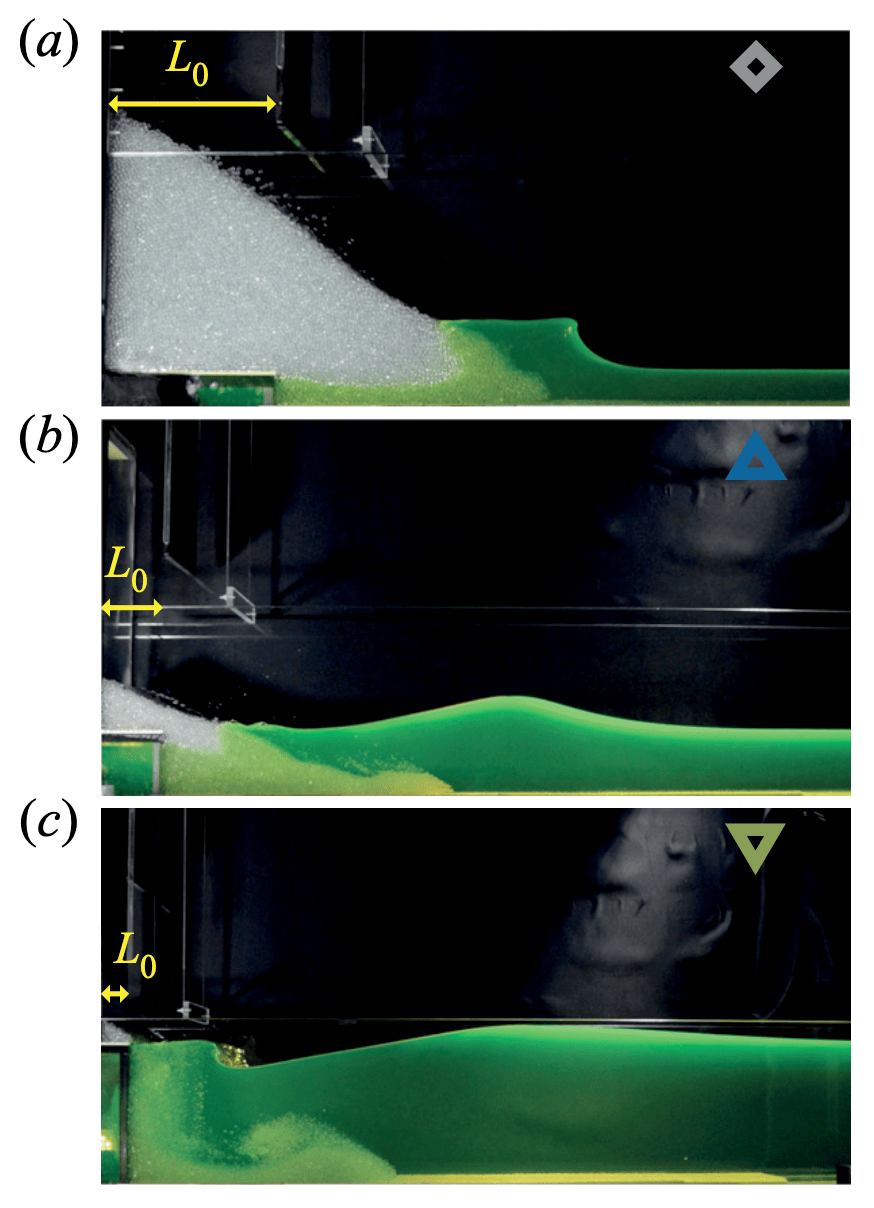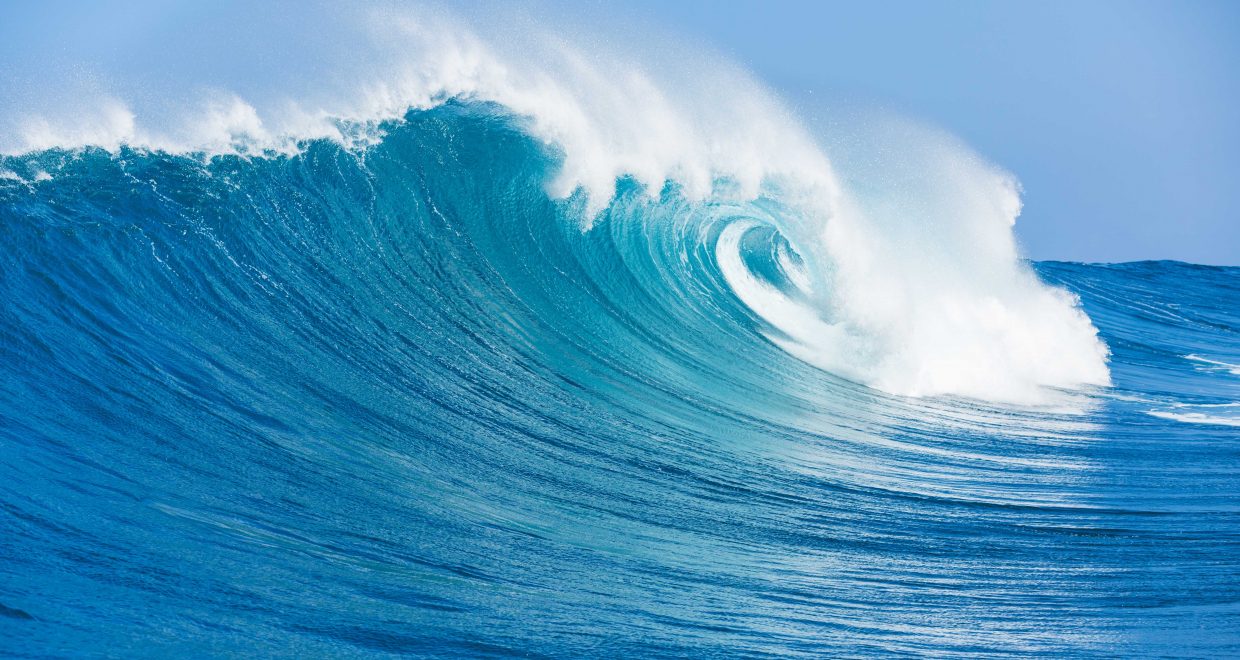Making Waves in the Lab
The term ‘tsunami’ is synonymous with gigantic and often catastrophic waves that destroy almost everything in their path. So, when Alban Sauret at UC Santa Barbara and his colleagues at FAST laboratory tried to create one in a lab setting, it would be fair to say they had their work cut out.

The experimental setup consists of a column of granular material of varying height H0 (9-39cm), varying width L0 (5-20cm), but fixed transverse width of 15cm; which is released via a sliding gate mechanism into a pool of water with total length 2m. The idea is to recreate the situation of a collapsing cliff or landslide into the ocean – a common cause of tsunamis as seen in the 2018 partial collapse of Anak Krakatau in Indonesia – to try to understand and predict the properties of the waves generated in this fashion.
Earlier work by the team showed that the velocity of the landslide as it enters the water is key in controlling the size of the wave, but little was known about the effects of the volume of the collapse and the water depth. In this latest JFM publication, we see how the geometry of the initial collapse affects the characteristics of the resultant wave, with three distinctive regimes identified: the bore wave (a), the solitary wave (b), and the non-linear transition wave (c).

The bore wave is typically seen for a large volume collapse into a shallow ocean, whilst the solitary wave occurs for landslides with smaller volume. The non-linear transition wave is seen for tall, thin collapses into a deeper ocean.
The authors believe the grains “act like a piston as they enter the water, the horizontal force of which governs the formation of the wave”. This is consistent with shallow water theory in the first two regimes of bore and solitary waves, but the transition to deep water non-linear waves in the third regime requires additional understanding of the physical mechanisms present.
The expected behaviour of the wave is determined by the local Froude number Frf = vm / (g h0) which is based on the velocity of the collapsing front Vm, the depth of the water h0, and gravitational acceleration g. For large values of the Froude number, Frf > 0.87, bore waves are seen; for small values of Frf < 0.35 we see non-linear transition waves; and for the intermediate range 0.35 < Frf < 0.87 solitary waves occur.
Another interesting result found by the researchers was the apparent non-influence of the properties of the granular material. Conducting experiments with a series of different density and diameter grains, the resultant amplitude of the wave was unchanged. Understanding this ‘non-effect’ further, as well as the changing forces on the particles as they move from air to water remain the future challenges in this area of research.
Ultimately, the hope is to be able to use this new knowledge to increase the complexity of tsunami prediction models, which currently rely on simplified models that do not capture the physics of the landslide as it enters the water. Comparisons of the team’s experimental data with that from real-world case studies will be key to identifying the importance of the wave regimes on tsunami generation.
Sarlin, W., Morize, C., Sauret, A., & Gondret, P. (2021). Nonlinear regimes of tsunami waves generated by a granular collapse. Journal of Fluid Mechanics, 919, R6. doi:10.1017/jfm.2021.400






